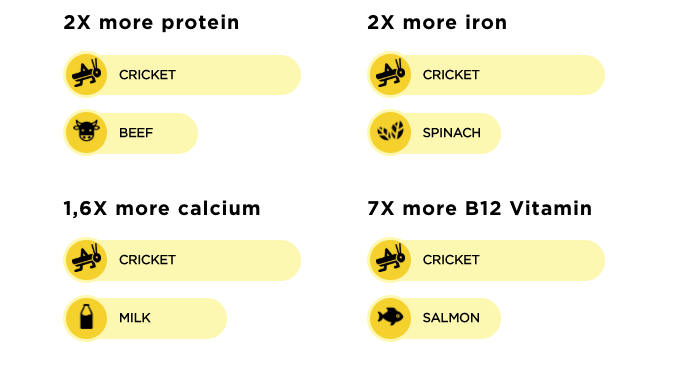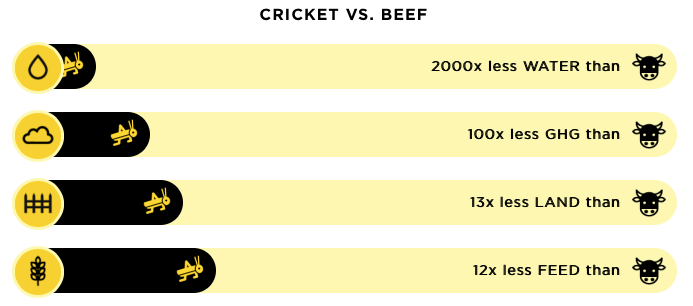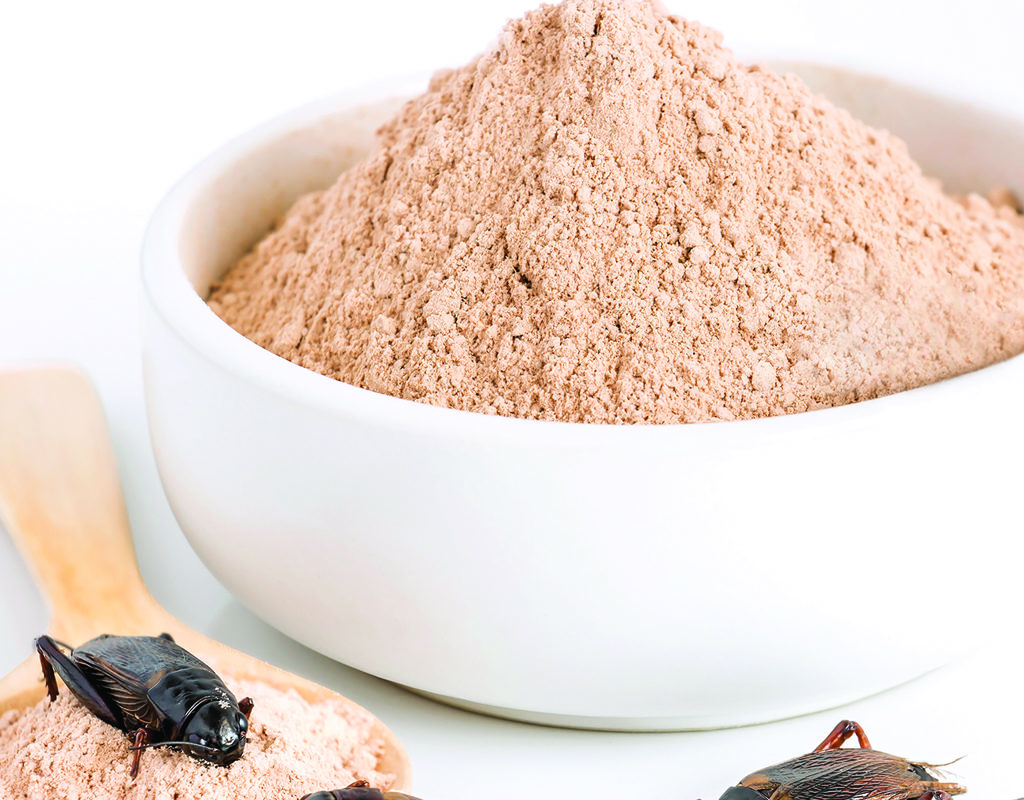By Kristina Nel
In 2013, the Food and Agriculture Organization (FAO) released a report entitled Edible Insects – Future prospects for food and feed security. This report recommends integrating edible insects into our diet, in order to maintain a high-quality diet and reduce our environmental footprint. The publication of this paper had a catalyzer effect on the popularity of eating insects in North America. But why insects? Because they are nutritious, eco-responsible, and taste delicious! If you’re interested in learning more about the benefits of adding crickets (the most commonly consumed insect in North America) to your diet, keep on reading.
Health Benefits of Eating Cricket
Cricket is truly what we call a “superfood” i.e. a nutrient-rich food with health-promoting properties considered to be especially beneficial for general health and well-being. This edible insect is packed with macronutrients and micronutrients like vitamins and minerals, which are all crucial to support optimal health.
Did you know that cricket is 60% protein, whereas beef is only 20-30% protein? In other words, cricket contains 2X more protein than beef on a per weight basis! Not only is cricket high in protein, it is also a complete source of protein. This means that cricket protein contains all the essential amino acids that your body cannot synthesize on its own and that you must obtain through your diet. Protein is an important macronutrient. It is used by the body for muscle synthesis and muscle repair. Therefore, protein is crucial to maintain lean body mass, especially for active people whose muscles deteriorate during exercise.
Cricket is also high in calcium. As it happens, cricket contains 1.6X more calcium than milk on a per weight basis. Calcium is an important nutrient that plays many roles in the human body, including the formation and maintenance of healthy bones, as well as the insurance of proper muscle contraction. Calcium is especially important for athletes because they lose more minerals through perspiration, and because low calcium levels increases the risk of experiencing muscle cramps during physical effort.
Cricket is also rich in iron. Actually, cricket contains 2X more iron than spinach on a per weight basis Iron is an essential nutrient, meaning it must be obtained through the diet. It is a component of hemoglobin; the part of red blood cells that carries oxygen from your lungs to the rest of your body. Hence, it is particularly important for athletes because it ensures that muscles are oxygenated and working properly, and it helps the body convert carbohydrates into energy during exercise.
Another important nutrient found in large quantities in cricket is vitamin B12. As a matter of fact, cricket contains 7X more vitamin B12 than salmon on a per weight basis. Vitamin B12 is an essential B vitamin that participates in maintaining the body’s homeostasis and plays a crucial role in blood and neurological functioning. Vitamin B12 is involved in the production of nerve cells, DNA, and red blood cells. Therefore, it is important for athletes to have adequate levels of vitamin B12 to ensure that the oxygen carrying capacity of their blood is not compromised.

Environmental Benefits of Eating Cricket
It is estimated that the world population will exceed nine billion people by the year 2050. In order to meet the needs of this rising population, it will be necessary to almost double the current food production. However, this is not a feasible solution given that the current means of production are nearly insufficient to feed the present population. The biggest problem lies in the growing demand for animal protein. Farming animals requires lots of space, feed and water; it creates lots of strain on the Earth.
In terms of resources, crickets are much more sustainable than any other traditional animals currently being farmed. For instance, crickets require 12 times less feed, 13 times less land, 2000 times less water, and produce 100 times less greenhouse gases than beef. This is a huge difference considering the fact that the livestock sector generates as much greenhouse gases as the transport sector, and monopolizes two thirds of the cultivated surfaces on Earth.

With that being said, it is no surprise that edible insects are consumed more and more in North America. While there is a certain psychological barrier that must be overcome due to the lack of edible insects in dietary customs, there are lots of ways to consume crickets that make the transition to an entotarian diet much more comfortable. For instance, many companies are adding crickets to their products such as energy bars, protein bars, protein powder, chips, pasta, etc. In addition, you can start cooking with cricket powder, which can easily be added to all the meals you cook and the treats you bake!
Check out the Food and Agriculture Organization report for more information.



